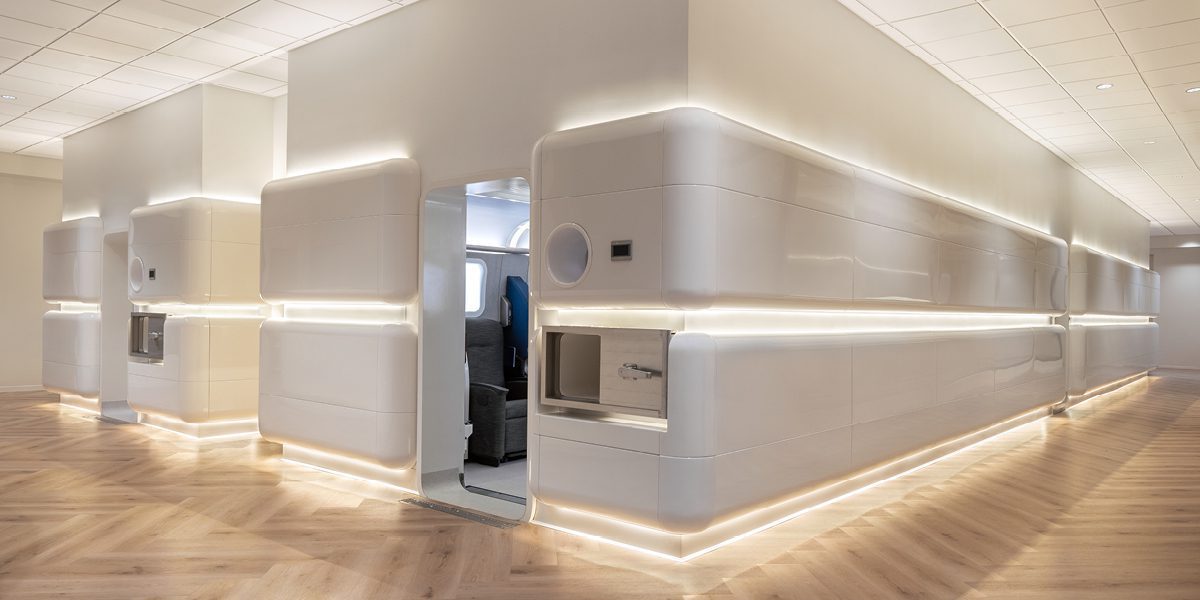Last Updated on January 27, 2021
 This post is sponsored by Aviv.
This post is sponsored by Aviv.
We can’t escape the biological timeline of aging. But we can stem the tide with new
technology. Two key biological hallmarks of aging — telomere length shortening and accumulation of senescent cells — can be reversed, according to a groundbreaking new study released by Tel Aviv University and The Sagol Center for Hyperbaric Medicine and Research at Shamir Medical Center.
This marks the first time that these treatments have proven effective on humans.
By using a specific protocol of hyperbaric oxygen therapy (HBOT), telomere length was significantly increased and senescent cells were reduced in a population of healthy aging subjects.
Staving off the biological deterioration of aging is critical because aging is a major risk factor for cancer, cardiovascular diseases, diabetes, dementia and Alzheimer’s disease.
Telomeres are the end of chromones that preserve genetic information.
“The useful way of thinking about them is to think of a shoelace [chromosomes] and the little protective tips at the end of your shoelaces [telomeres],” Dr. Elizabeth Blackburn, a scientist who won Nobel Prize in 2009 for the discovery of how chromosomes are protected by telomeres, told Growing Bolder.
“If you don’t have those, the shoelace frays away. We can think about genetic material and DNA and chromosomes as being like those shoelaces. The telomeres are these protective tips, and over the human lifespan, they have a tendency to wear down.”
The study is part of a comprehensive research program targeting aging as a reversible disease and has been published in the peer-review journal Aging, titled: Hyperbaric Oxygen Therapy Increases Telomere Length and Decreases Immunosenescence in Isolated Blood Cells: A Prospective Trial.
The prospective clinical trial, part of a comprehensive aging research program taking place in Israel, was conducted by Prof. Efrati, MD, from the Faculty of Medicine and Sagol School of Neuroscience at Tel Aviv University and Amir Hadanny, MD, Chief Medical Research Officer of The Sagol Center for Hyperbaric Medicine and Research and co-author of the study.
Simple exercise is important for “telomere maintenance,” but now we can add hyperbaric oxygen therapy (as seen above) into the mix of preventative, proactive tools.
“Until now, interventions such as lifestyle modifications and intense exercise were shown to have some inhibition effect on the expected telomere length shortening,” Dr. Hadanny said. “However, what is remarkable to note in our study, is that in just three months of HBOT, we were able to achieve such significant telomere elongation – at rates far beyond any of the current available interventions or lifestyle modifications.”
The trial included healthy independent adults aged 64 and older who did not undergo any lifestyle, diet or medication adjustments. Each patient received 60 daily HBOT sessions over the course of 90 days.
“After dedicating our HBOT research to exploring its impact on the areas of brain functionality and age-related cognitive decline, we have now uncovered for the first time in humans HBOT’s biological effects at the cellular level in healthy aging adults,” said Efrati, the research group leader.
This medical breakthrough is garnering global attention, but the first and only treatment option available outside of Tel Aviv, Israel, is at the state-of-the-art Aviv Clinics in The Villages, Florida.
It sounds and looks like it’s too good to be true, but this unique hyperbaric oxygen therapy is now available to the public. If you’re interested in trying it yourself, watch this quick video about the Aviv Medical Program and see inside the 30,000-square-ft, state-of-the-art Aviv Clinics in The Villages, Florida.














